Cheaper Alternative
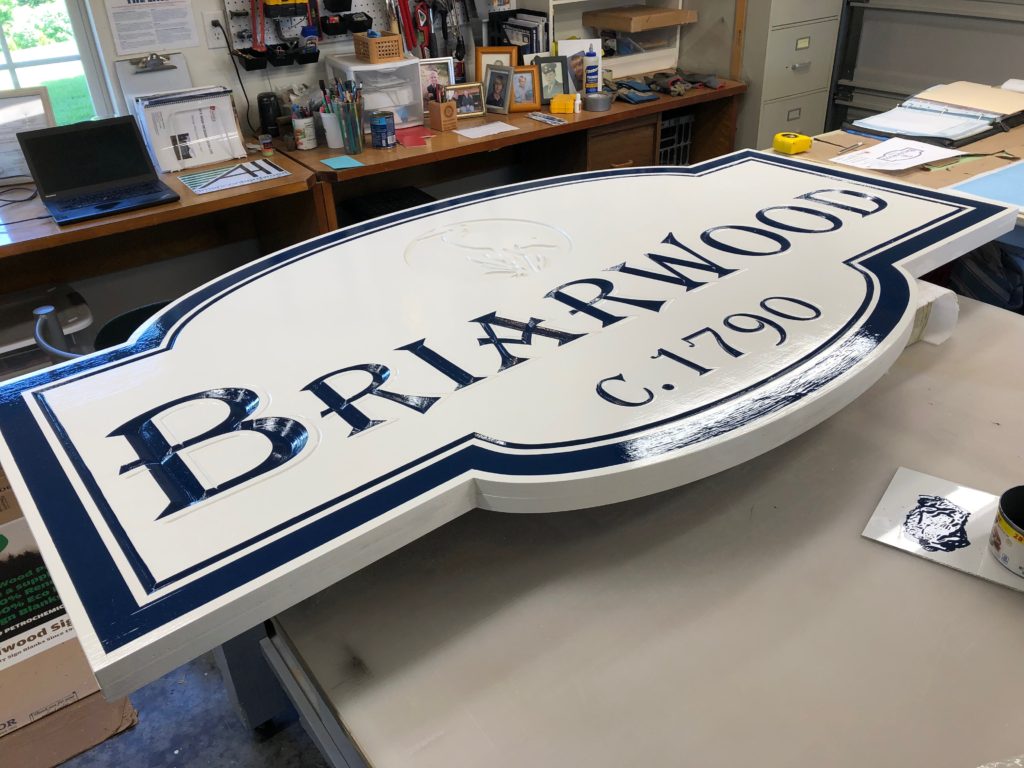
Carving signs from plywood is less expensive than carving signs with cedar or redwood as the sign substrate, but will it last as long? The simple answer is probably not, but I have just started carving in plywood so I have yet to see how it will last out in the elements.
My experience with plywood signage tells me that, unframed, a sign made from plywood will begin to show signs of weathering within several years. An adequately primed and painted plywood sign should last at least five years is what I generally tell my customers, but it depends on UV exposure, edge exposure to moisture, sign colors, and whether the lettering is painted or cut vinyl.
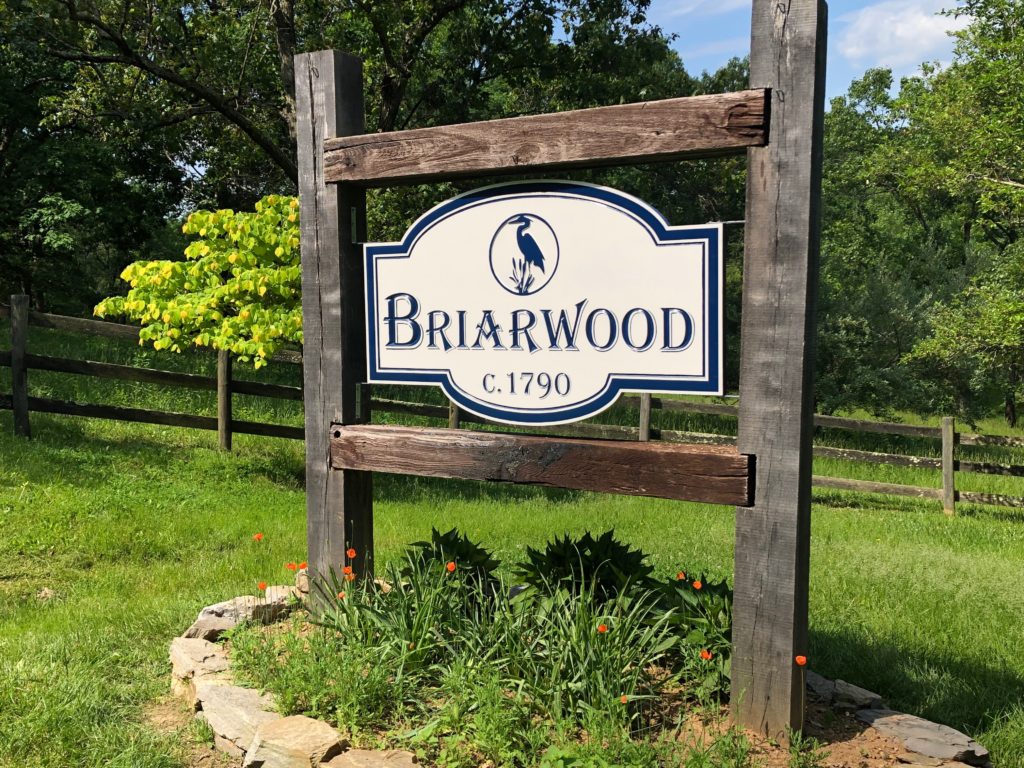
Unknown Durability
I am not sure how the carved lettering in plywood will fare when exposed to the Virginia elements. High heat and humidity in our area has a tendency to work on any exposed veneer joints where temperature can buckle the layers of the plywood allowing moisture to enter into the layers doing progressive damage. Cedar and redwood signs don’t have this vulnerability, thus the substrates will typically last a lifetime with regular maintenance.
I originally suggested a more expensive and durable carved cedar sign option, but unfortunately it was beyond the customer’s budget. That’s when the customer asked about carved plywood as an option. At first I wasn’t sure if that was even possible, but I soon discovered that it was doable. To create the same effect of a cedar sign, I had to laminate two 3/4″ pieces together since the thickest plywood I could get was 1″ thickness and carved cedar is typically made from 1 1/2″ thick boards.

Pleasing End-Result!
Once the sign was glued up, I took off the clamps, sanded, primed, and painted the background and graphics, adding several borders to make it more interesting. The customer suggested a white edge outline to help the sign pop from the green or brown-gray background, depending on the season. The customer replaced the old timber frame with new wood posts and beams. The protection from these extra large timbers around the sign edges should help the plywood panel fare better against the elements.
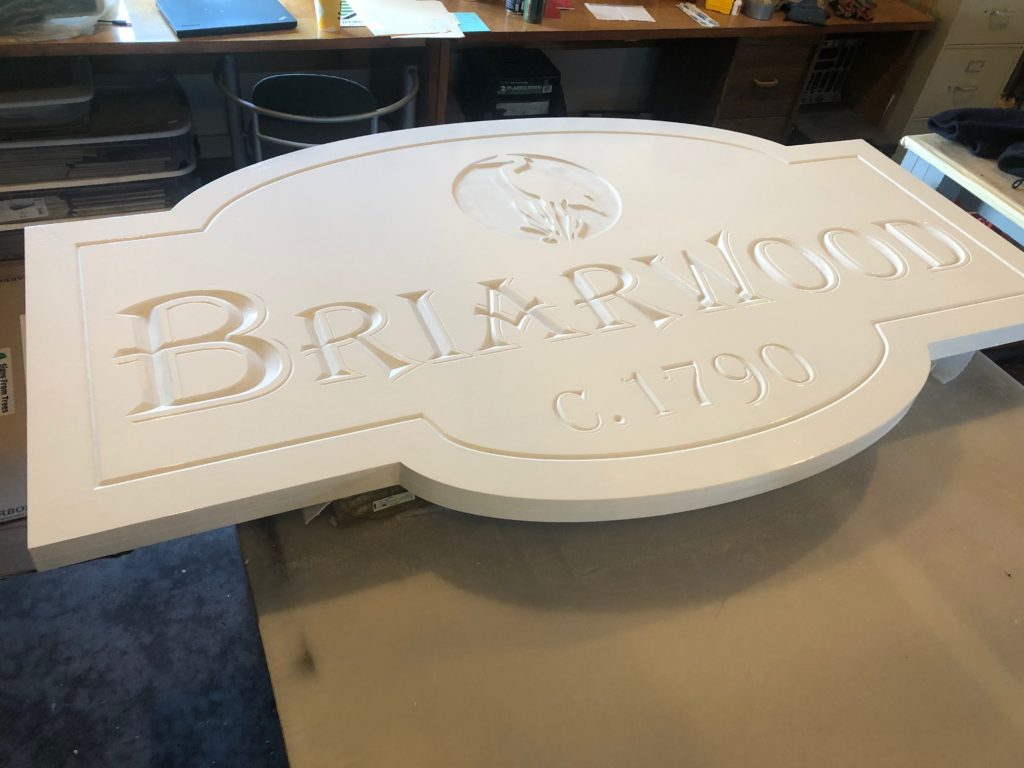
The customer was pleased with the final result! Now I will be sure to offer carving signs in plywood as an alternative to carved cedar for customer-candidates willing to compromise overall durability in their sign for lower cost.
Mark Hackley owns Augusta Sign Company near Middlebrook, Virginia in south-central Augusta County.



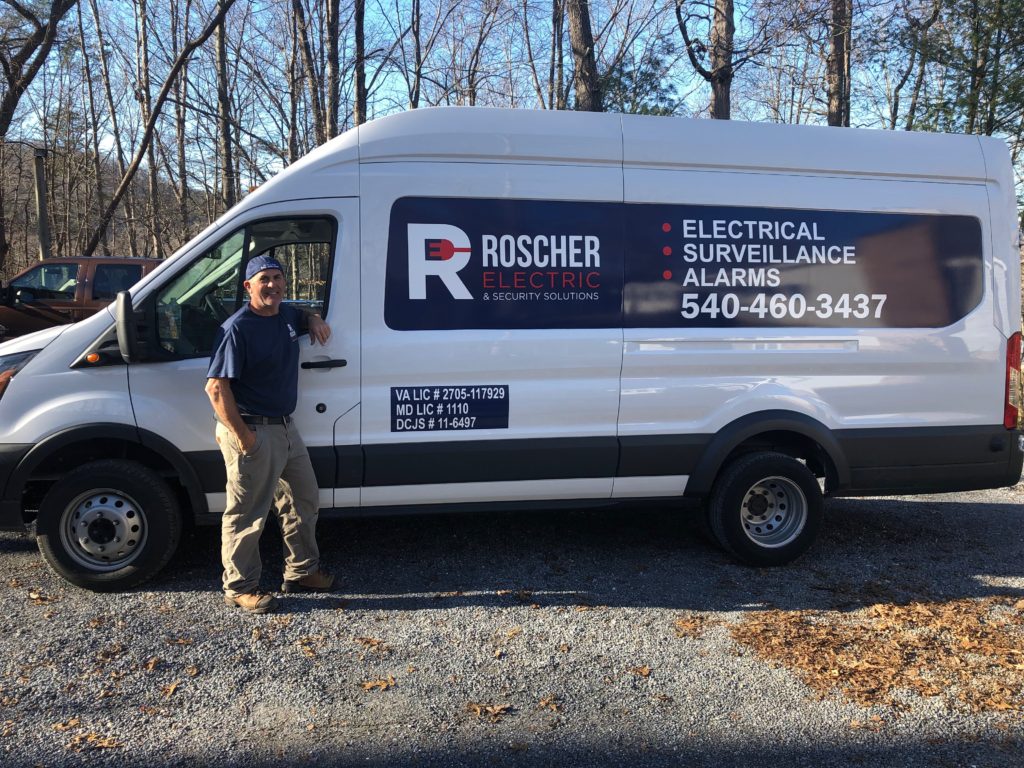
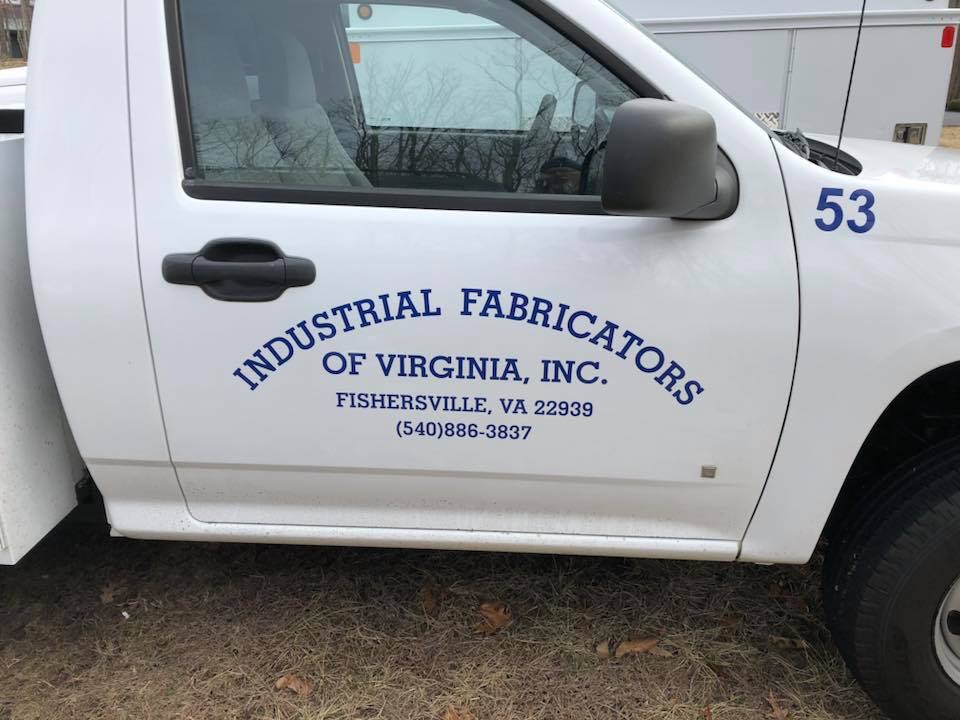
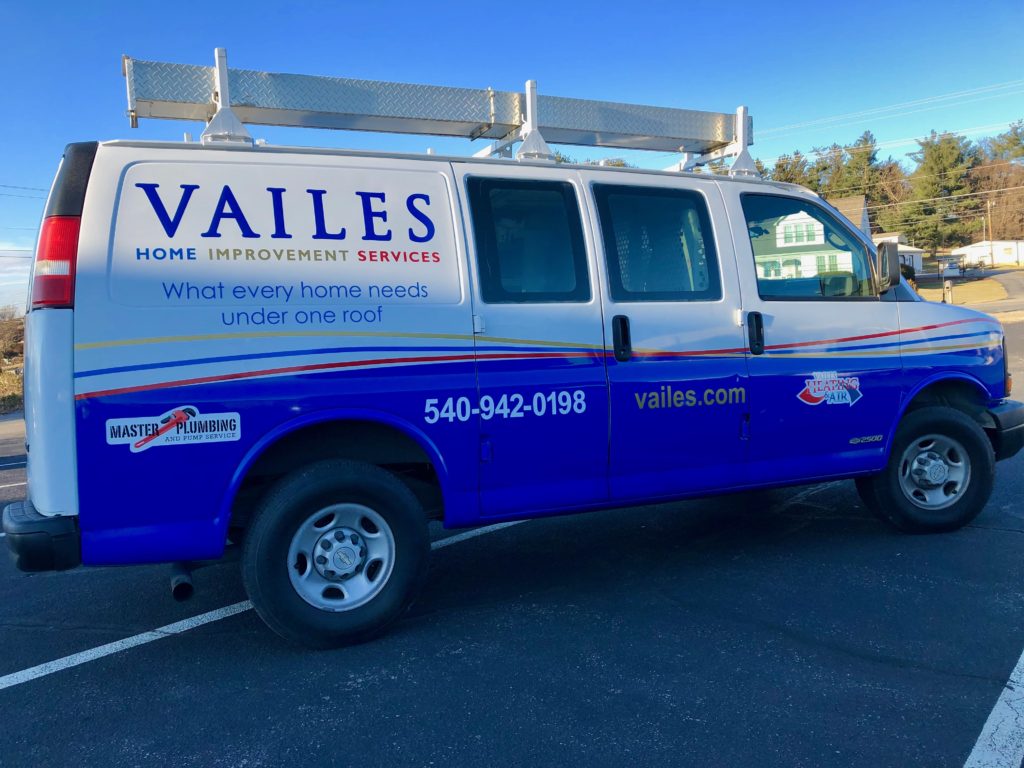
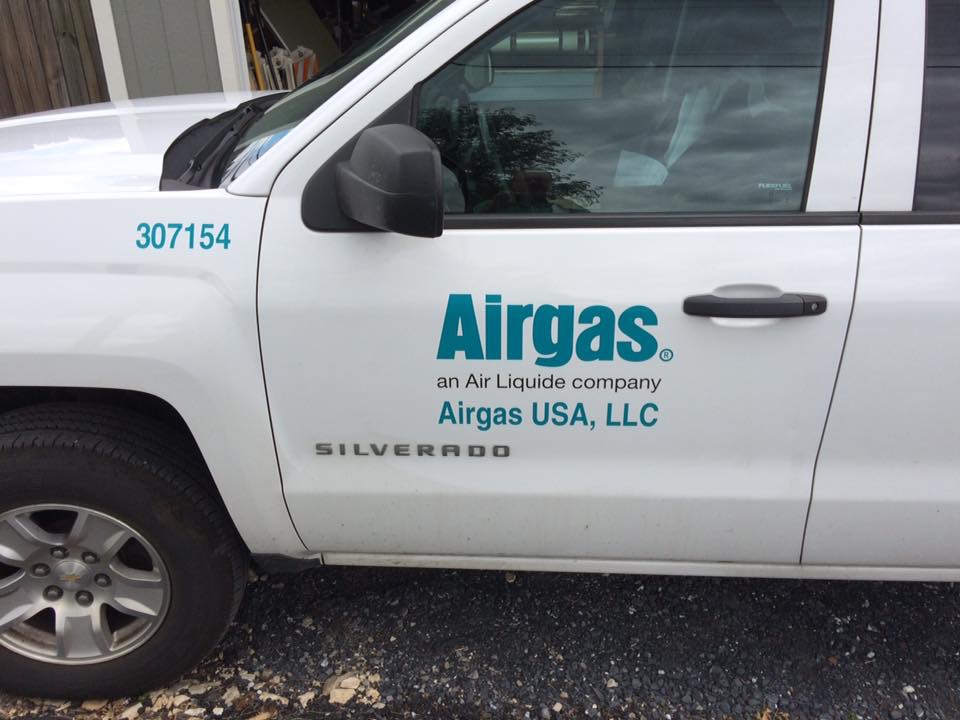
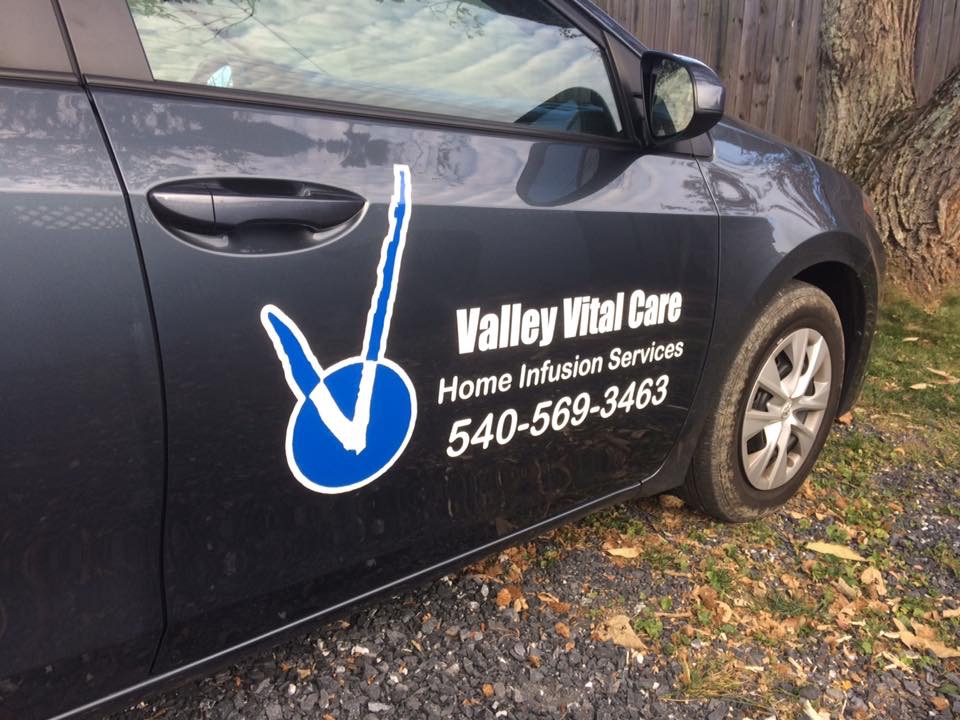
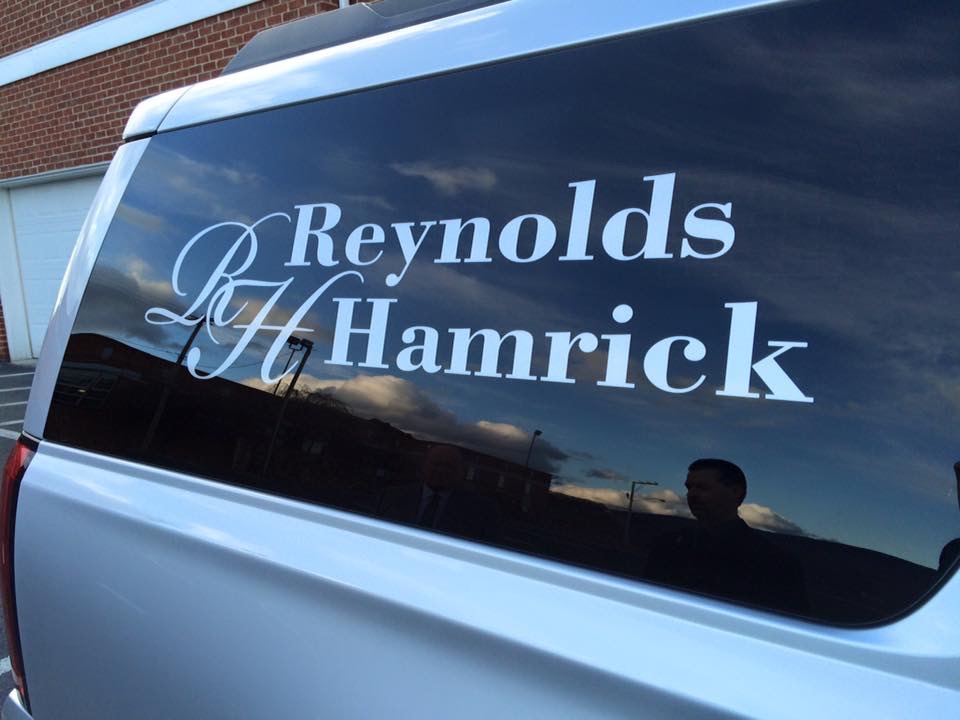
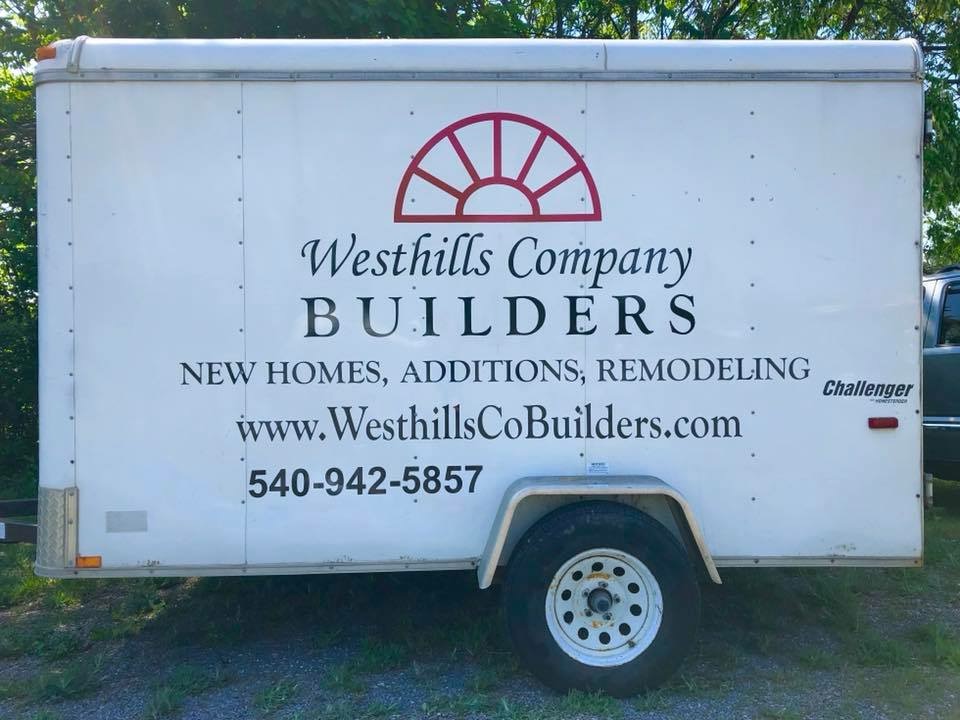
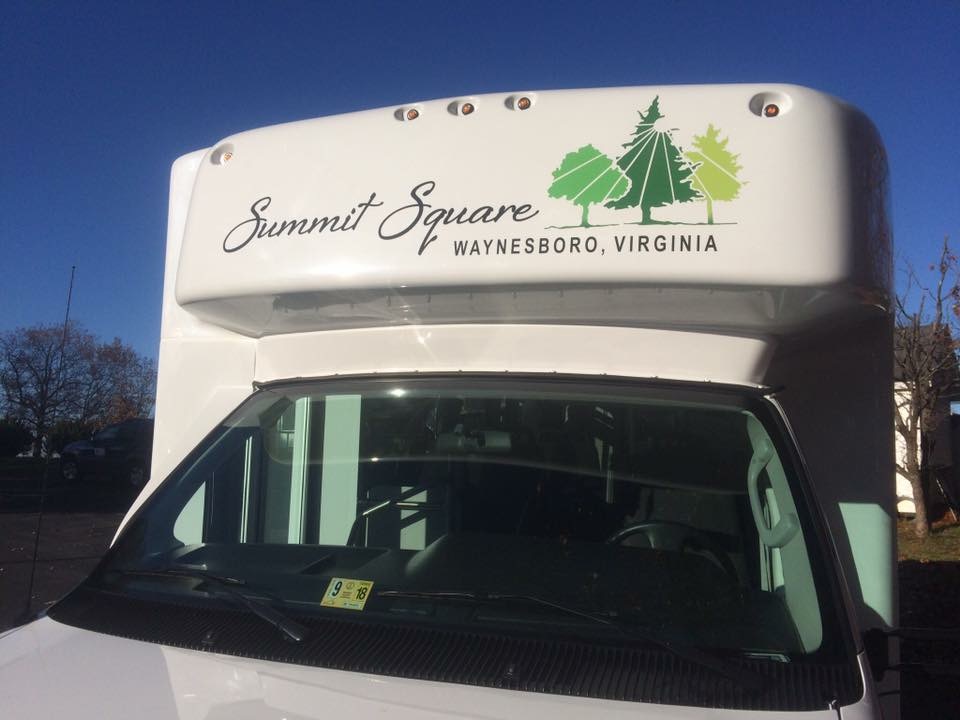
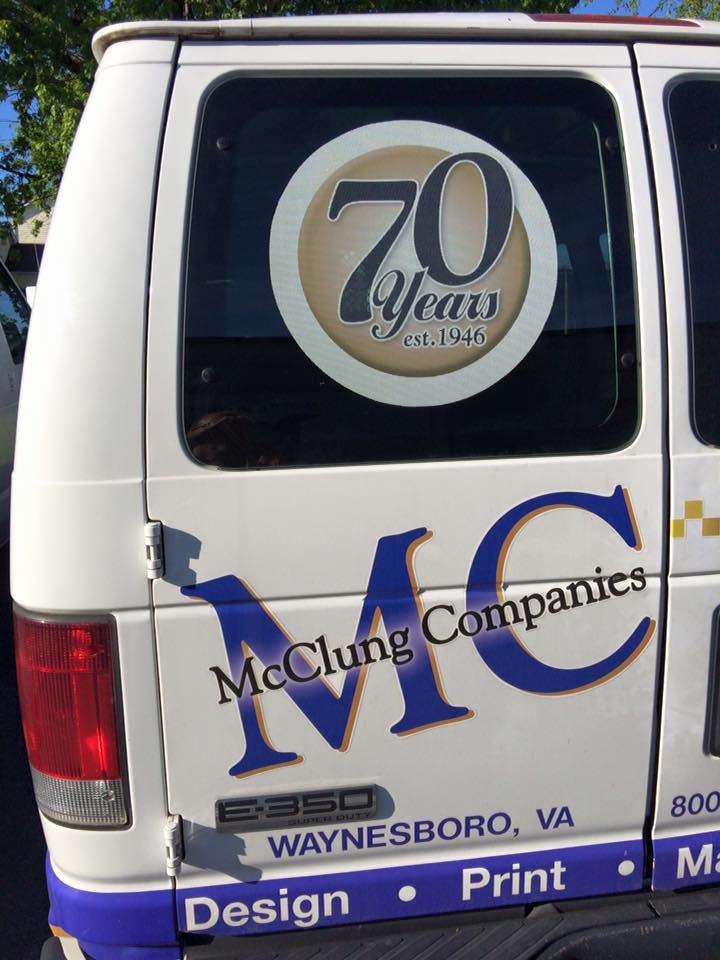
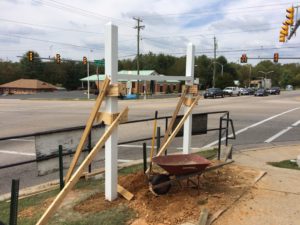 It takes some planning to make and install a large free-standing sign in the ground and install it where everything is relatively level and plumb.
It takes some planning to make and install a large free-standing sign in the ground and install it where everything is relatively level and plumb. 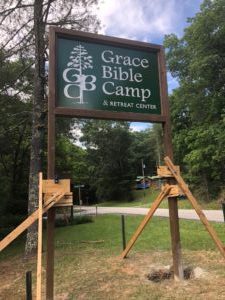 tables, disassemble them, then assemble them again in the field when I know that everything will fit together nice and square. Most of the time the land in which the sign will be erected is not flat, so I have to take into consideration that either one hole will be deeper or one post will be longer to compensate for the difference. Once the holes are dug and the poles are hoisted in place, I attach my own clamping system, one of Augusta Sign Company’s ingenious intellectual properties, that keeps signposts plumb in both directions (forward-to-backward; and side-to-side).
tables, disassemble them, then assemble them again in the field when I know that everything will fit together nice and square. Most of the time the land in which the sign will be erected is not flat, so I have to take into consideration that either one hole will be deeper or one post will be longer to compensate for the difference. Once the holes are dug and the poles are hoisted in place, I attach my own clamping system, one of Augusta Sign Company’s ingenious intellectual properties, that keeps signposts plumb in both directions (forward-to-backward; and side-to-side).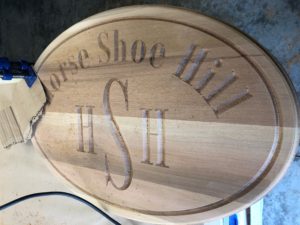 Applying Gold Leaf to Carved Signs
Applying Gold Leaf to Carved Signs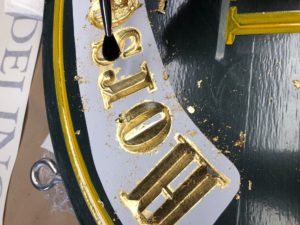 presented my proposal, she elected to go for the gold! Gold leaf is an ancient art form. “The Temple of Solomon was profusely gilt,” says Homer in his early writings. Gold leaf was widely used in old Roman art, architecture, furniture, and carved lettering. Gold leaf is actual gold that is beaten down to a fine sheet and applied to surfaces with “size”, a special type of “glue” that the thin metal sheets stick to. To make the sign for the horse farm, I first ordered the cedar panel and had the letters and borders CNC-routed from my customer-approved design. Once the letters and borders were carved, I sanded them with fine-grit sandpaper to smooth out any course grain in the lettering. Once sanded, I cleaned and primed the entire two-sided sign with a quality oil-based primer that seals the wood and provides an adequate base for the finish coat, which in this case was a brush-painted Hunter Green sign enamel. It helps to tint your primer to the shade of your finish coat, so I added some black tint to make a gray primer coat. I use the 2-2-2 method in my finishing of wood signs: 2 coats primer, 2 coats background finish, and 2 coats for the graphics, which for this project meant two passes of gilding to catch any missed areas and pinholes.
presented my proposal, she elected to go for the gold! Gold leaf is an ancient art form. “The Temple of Solomon was profusely gilt,” says Homer in his early writings. Gold leaf was widely used in old Roman art, architecture, furniture, and carved lettering. Gold leaf is actual gold that is beaten down to a fine sheet and applied to surfaces with “size”, a special type of “glue” that the thin metal sheets stick to. To make the sign for the horse farm, I first ordered the cedar panel and had the letters and borders CNC-routed from my customer-approved design. Once the letters and borders were carved, I sanded them with fine-grit sandpaper to smooth out any course grain in the lettering. Once sanded, I cleaned and primed the entire two-sided sign with a quality oil-based primer that seals the wood and provides an adequate base for the finish coat, which in this case was a brush-painted Hunter Green sign enamel. It helps to tint your primer to the shade of your finish coat, so I added some black tint to make a gray primer coat. I use the 2-2-2 method in my finishing of wood signs: 2 coats primer, 2 coats background finish, and 2 coats for the graphics, which for this project meant two passes of gilding to catch any missed areas and pinholes.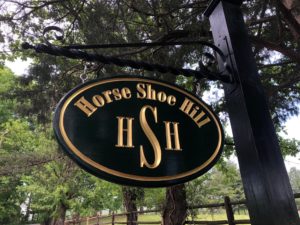 Once the gold was applied and cured for several days, I burnished it with a cotton ball and completely waxed the entire sign using Nu-Finish synthetic auto wax, available in most auto parts stores. The post was constructed from a 6″ X 6″ X 13′ long Southern Yellow Pine column with a beefed-up area at the bottom of the post, suggested by my customer’s architect. The sign post was colored black to match the black iron scroll bracket, which was a stock item from my supplier. I used stainless steel eye-bolts and quick links to attach the sign to the bracket. The sign was planted in a 3 foot deep hole and surrounded with fast set concrete.
Once the gold was applied and cured for several days, I burnished it with a cotton ball and completely waxed the entire sign using Nu-Finish synthetic auto wax, available in most auto parts stores. The post was constructed from a 6″ X 6″ X 13′ long Southern Yellow Pine column with a beefed-up area at the bottom of the post, suggested by my customer’s architect. The sign post was colored black to match the black iron scroll bracket, which was a stock item from my supplier. I used stainless steel eye-bolts and quick links to attach the sign to the bracket. The sign was planted in a 3 foot deep hole and surrounded with fast set concrete.